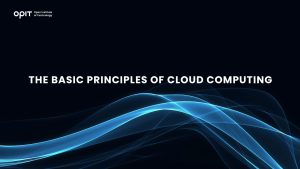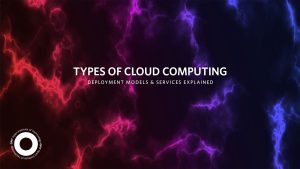Big Data Analytics: A Comprehensive Guide to Characteristics, Types, & Real-World Trends
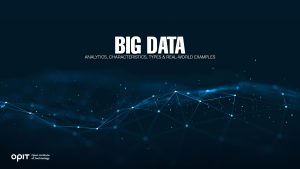
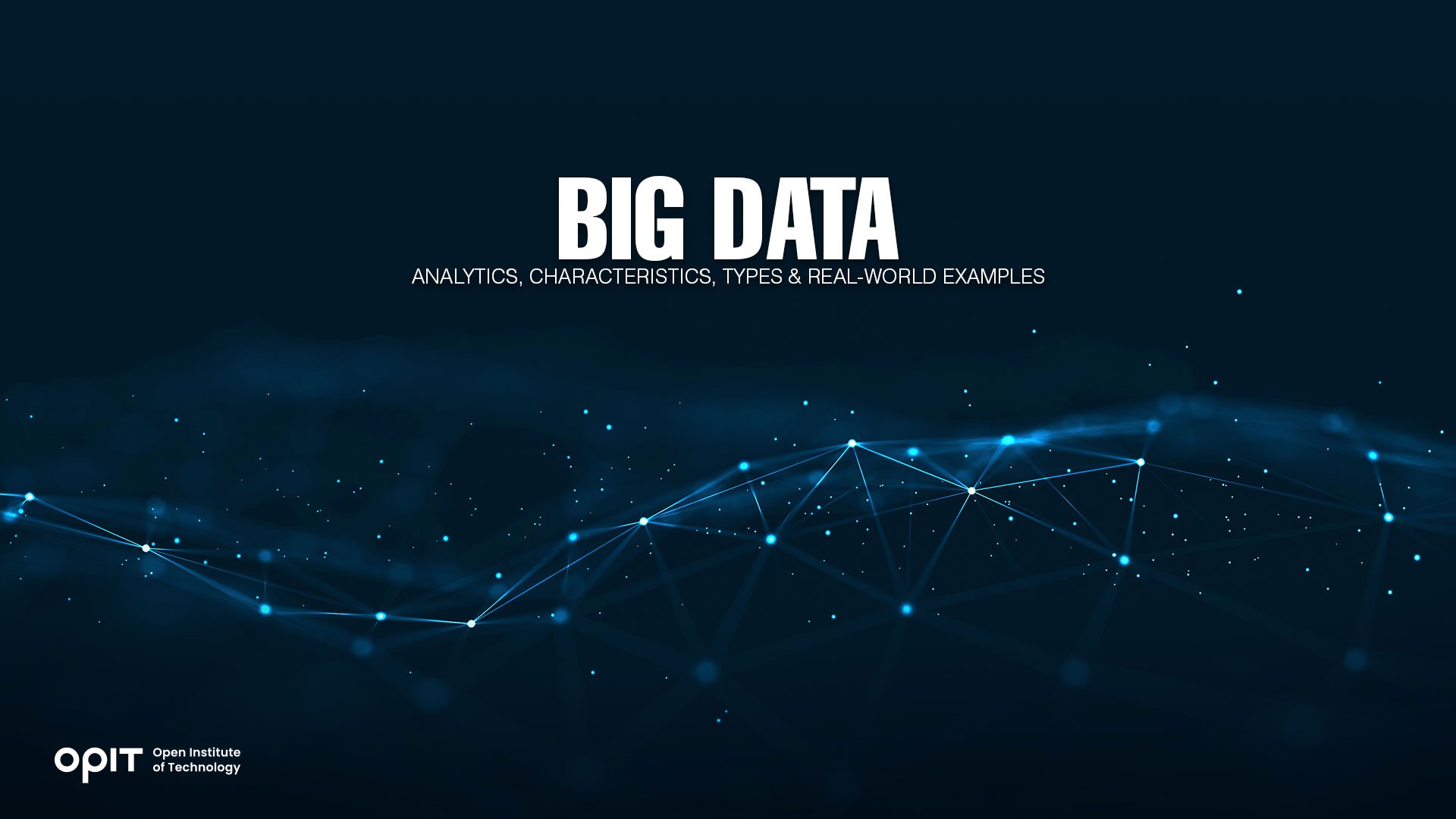
The term “big data” is self-explanatory: it’s a large collection of data. However, to be classified as “big,” data needs to meet specific criteria. Big data is huge in volume, gets even bigger over time, arrives with ever-higher velocity, and is so complex that no traditional tools can handle it.
Big data analytics is the (complex) process of analyzing these huge chunks of data to discover different information. The process is especially important for small companies that use the uncovered information to design marketing strategies, conduct market research, and follow the latest industry trends.
In this introduction to big data analytics, we’ll dig deep into big data and uncover ways to analyze it. We’ll also explore its (relatively short) history and evolution and present its advantages and drawbacks.
History and Evolution of Big Data
We’ll start this introduction to big data with a short history lesson. After all, we can’t fully answer the “what is big data?” question if we don’t know its origins.
Let’s turn on our time machine and go back to the 1960s. That’s when the first major change that marked the beginning of the big data era took place. The advanced development of data centers, databases, and innovative processing methods facilitated the rise of big data.
Relational databases (storing and offering access to interconnected data points) have become increasingly popular. While people had ways to store data much earlier, experts consider that this decade set the foundations for the development of big data.
The next major milestone was the emergence of the internet and the exponential growth of data. This incredible invention made handling and analyzing large chunks of information possible. As the internet developed, big data technologies and tools became more advanced.
This leads us to the final destination of short time travel: the development of big data analytics, i.e., processes that allow us to “digest” big data. Since we’re witnessing exceptional technological developments, the big data journey is yet to continue. We can only expect the industry to advance further and offer more options.
Big Data Technologies and Tools
What tools and technologies are used to decipher big data and offer value?
Data Storage and Management
Data storage and management tools are like virtual warehouses where you can pack up your big data safely and work with it as needed. These tools feature a powerful infrastructure that lets you access and fetch the desired information quickly and easily.
Data Processing and Analytics Framework
Processing and analyzing huge amounts of data are no walk in the park. But they can be, thanks to specific tools and technologies. These valuable allies can clean and transform large piles of information into data you can use to pursue your goals.
Machine Learning and Artificial Intelligence Platforms
Machine learning and artificial intelligence platforms “eat” big data and perform a wide array of functions based on the discoveries. These technologies can come in handy with testing hypotheses and making important decisions. Best of all, they require minimal human input; you can relax while AI works its magic.
Data Visualization Tools
Making sense of large amounts of data and presenting it to investors, stakeholders, and team members can feel like a nightmare. Fortunately, you can turn this nightmare into a dream come true with big data visualization tools. Thanks to the tools, creating stunning graphs, dashboards, charts, and tables and impressing your coworkers and superiors has never been easier.
Big Data Analytics Techniques and Methods
What techniques and methods are used in big data analytics? Let’s find the answer.
Descriptive Analytics
Descriptive analytics is like a magic wand that turns raw data into something people can read and understand. Whether you want to generate reports, present data on a company’s revenue, or analyze social media metrics, descriptive analytics is the way to go.
It’s mostly used for:
- Data summarization and aggregation
- Data visualization
Diagnostic Analytics
Have a problem and want to get detailed insight into it? Diagnostic analytics can help. It identifies the root of an issue, helping you figure out your next move.
Some methods used in diagnostic analytics are:
- Data mining
- Root cause analysis
Predictive Analytics
Predictive analytics is like a psychic that looks into the future to predict different trends.
Predictive analytics often uses:
- Regression analysis
- Time series analysis
Prescriptive Analytics
Prescriptive analytics is an almighty problem-solver. It usually joins forces with descriptive and predictive analytics to offer an ideal solution to a particular problem.
Some methods prescriptive analytics uses are:
- Optimization techniques
- Simulation and modeling
Applications of Big Data Analytics
Big data analytics has found its home in many industries. It’s like the not-so-secret ingredient that can make the most of any niche and lead to desired results.
Business and Finance
How do business and finance benefit from big data analytics? These industries can flourish through better decision-making, investment planning, fraud detection and prevention, and customer segmentation and targeting.
Healthcare
Healthcare is another industry that benefits from big data analytics. In healthcare, big data is used to create patient databases, personal treatment plans, and electronic health records. This data also serves as an excellent foundation for accurate statistics about treatments, diseases, patient backgrounds, risk factors, etc.
Government and Public Sector
Big data analytics has an important role in government and the public sector. Analyzing different data improves efficiency in terms of costs, innovation, crime prediction and prevention, and workforce. Multiple government parts often need to work together to get the best results.
As technology advances, big data analytics has found another major use in the government and public sector: smart cities and infrastructure. With precise and thorough analysis, it’s possible to bring innovation and progress and implement the latest features and digital solutions.
Sports and Entertainment
Sports and entertainment are all about analyzing the past to predict the future and improve performance. Whether it’s analyzing players to create winning strategies or attracting the audience and freshening up the content, big data analytics is like a valuable player everyone wants on their team.
Challenges and Ethical Considerations in Big Data Analytics
Big data analytics represent doors to new worlds of information. But opening these doors often comes with certain challenges and ethical considerations.
Data Privacy and Security
One of the major challenges (and the reason some people aren’t fans of big data analytics) is data privacy and security. The mere fact that personal information can be used in big data analytics can make individuals feel exploited. Since data breaches and identity thefts are, unfortunately, becoming more common, it’s no surprise some people feel this way.
Fortunately, laws like GDPR and CCPA give individuals more control over the information others can collect from them.
Data Quality and Accuracy
Big data analytics can sometimes be a dead end. If the material wasn’t handled correctly, or the data was incomplete to start with, the results themselves won’t be adequate.
Algorithmic Bias and Fairness
Big data analytics is based on algorithms, which are designed by humans. Hence, it’s not unusual to assume that these algorithms can be biased (or unfair) due to human prejudices.
Ethical Use of Big Data Analytics
The ethical use of big data analytics concerns the “right” and “wrong” in terms of data usage. Can big data’s potential be exploited to the fullest without affecting people’s right to privacy?
Future Trends and Opportunities in Big Data Analytics
Although it has proven useful in many industries, big data analytics is still relatively young and unexplored.
Integration of Big Data Analytics With Emerging Technologies
It seems that new technologies appear in the blink of an eye. Our reality today (in a technological sense) looks much different than just two or three years ago. Big data analytics is now intertwined with emerging technologies that give it extra power, accuracy, and quality.
Cloud computing, advanced databases, the Internet of Things (IoT), and blockchain are only some of the technologies that shape big data analytics and turn it into a powerful giant.
Advancements in Machine Learning and Artificial Intelligence
Machines may not replace us (at least not yet), but it’s impossible to deny their potential in many industries, including big data analytics. Machine learning and artificial intelligence allow for analyzing huge amounts of data in a short timeframe.
Machines can “learn” from their own experience and use this knowledge to make more accurate predictions. They can pinpoint unique patterns in piles of information and estimate what will happen next.
New Applications and Industries Adopting Big Data Analytics
One of the best characteristics of big data analytics is its versatility and flexibility. Accordingly, many industries use big data analytics to improve their processes and achieve goals using reliable information.
Every day, big data analytics finds “new homes” in different branches and niches. From entertainment and medicine to gambling and architecture, it’s impossible to ignore the importance of big data and the insights it can offer.
These days, we recognize the rise of big data analytics in education (personalized learning) and agriculture (environmental monitoring).
Workforce Development and Education in Big Data Analytics
Analyzing big data is impossible without the workforce capable of “translating” the results and adopting emerging technologies. As big data analytics continues to develop, it’s vital not to forget about the cog in the wheel that holds everything together: trained personnel. As technology evolves, specialists need to continue their education (through training and certification programs) to stay current and reap the many benefits of big data analytics.
Turn Data to Your Advantage
Whatever industry you’re in, you probably have goals you want to achieve. Naturally, you want to achieve them as soon as possible and enjoy the best results. Instead of spending hours and hours going through piles of information, you can use big data analytics as a shortcut. Different types of big data technologies can help you improve efficiency, analyze risks, create targeted promotions, attract an audience, and, ultimately, increase revenue.
While big data offers many benefits, it’s also important to be aware of the potential risks, including privacy concerns and data quality.
Since the industry is changing (faster than many anticipated), you should stay informed and engaged if you want to enjoy its advantages.
Related posts

Source:
- Raconteur, published on November 06th, 2025
Many firms have conducted successful Artificial Intelligence (AI) pilot projects, but scaling them across departments and workflows remains a challenge. Inference costs, data silos, talent gaps and poor alignment with business strategy are just some of the issues that leave organisations trapped in pilot purgatory. This inability to scale successful experiments means AI’s potential for improving enterprise efficiency, decision-making and innovation isn’t fully realised. So what’s the solution?
Although it’s not a magic bullet, an AI operating model is really the foundation for scaling pilot projects up to enterprise-wide deployments. Essentially it’s a structured framework that defines how the organisation develops, deploys and governs AI. By bringing together infrastructure, data, people, and governance in a flexible and secure way, it ensures that AI delivers value at scale while remaining ethical and compliant.
“A successful AI proof-of-concept is like building a single race car that can go fast,” says Professor Yu Xiong, chair of business analytics at the UK-based Surrey Business School. “An efficient AI technology operations model, however, is the entire system – the processes, tools, and team structures – for continuously manufacturing, maintaining, and safely operating an entire fleet of cars.”
But while the importance of this framework is clear, how should enterprises establish and embed it?
“It begins with a clear strategy that defines objectives, desired outcomes, and measurable success criteria, such as model performance, bias detection, and regulatory compliance metrics,” says Professor Azadeh Haratiannezhadi, co-founder of generative AI company Taktify and professor of generative AI in cybersecurity at OPIT – the Open Institute of Technology.
Platforms, tools and MLOps pipelines that enable models to be deployed, monitored and scaled in a safe and efficient way are also essential in practical terms.
“Tools and infrastructure must also be selected with transparency, cost, and governance in mind,” says Efrain Ruh, continental chief technology officer for Europe at Digitate. “Crucially, organisations need to continuously monitor the evolving AI landscape and adapt their models to new capabilities and market offerings.”
An open approach
The most effective AI operating models are also founded on openness, interoperability and modularity. Open source platforms and tools provide greater control over data, deployment environments and costs, for example. These characteristics can help enterprises to avoid vendor lock-in, successfully align AI to business culture and values, and embed it safely into cross-department workflows.
“Modularity and platformisation…avoids building isolated ‘silos’ for each project,” explains professor Xiong. “Instead, it provides a shared, reusable ‘AI platform’ that integrates toolchains for data preparation, model training, deployment, monitoring, and retraining. This drastically improves efficiency and reduces the cost of redundant work.”
A strong data strategy is equally vital for ensuring high-quality performance and reducing bias. Ideally, the AI operating model should be cloud and LLM agnostic too.
“This allows organisations to coordinate and orchestrate AI agents from various sources, whether that’s internal or 3rd party,” says Babak Hodjat, global chief technology officer of AI at Cognizant. “The interoperability also means businesses can adopt an agile iterative process for AI projects that is guided by measuring efficiency, productivity, and quality gains, while guaranteeing trust and safety are built into all elements of design and implementation.”
A robust AI operating model should feature clear objectives for compliance, security and data privacy, as well as accountability structures. Richard Corbridge, chief information officer of Segro, advises organisations to: “Start small with well-scoped pilots that solve real pain points, then bake in repeatable patterns, data contracts, test harnesses, explainability checks and rollback plans, so learning can be scaled without multiplying risk. If you don’t codify how models are approved, deployed, monitored and retired, you won’t get past pilot purgatory.”
Of course, technology alone can’t drive successful AI adoption at scale: the right skills and culture are also essential for embedding AI across the enterprise.
“Multidisciplinary teams that combine technical expertise in AI, security, and governance with deep business knowledge create a foundation for sustainable adoption,” says Professor Haratiannezhadi. “Ongoing training ensures staff acquire advanced AI skills while understanding associated risks and responsibilities.”
Ultimately, an AI operating model is the playbook that enables an enterprise to use AI responsibly and effectively at scale. By drawing together governance, technological infrastructure, cultural change and open collaboration, it supports the shift from isolated experiments to the kind of sustainable AI capability that can drive competitive advantage.
In other words, it’s the foundation for turning ambition into reality, and finally escaping pilot purgatory for good.
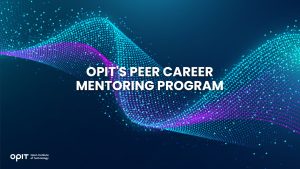
The Open Institute of Technology (OPIT) is the perfect place for those looking to master the core skills and gain the fundamental knowledge they need to enter the exciting and dynamic environment of the tech industry. While OPIT’s various degrees and courses unlock the doors to numerous careers, students may not know exactly which line of work they wish to enter, or how, exactly, to take the next steps.
That’s why, as well as providing exceptional online education in fields like Responsible AI, Computer Science, and Digital Business, OPIT also offers an array of career-related services, like the Peer Career Mentoring Program. Designed to provide the expert advice and support students need, this program helps students and alumni gain inspiration and insight to map out their future careers.
Introducing the OPIT Peer Career Mentoring Program
As the name implies, OPIT’s Peer Career Mentoring Program is about connecting students and alumni with experienced peers to provide insights, guidance, and mentorship and support their next steps on both a personal and professional level.
It provides a highly supportive and empowering space in which current and former learners can receive career-related advice and guidance, harnessing the rich and varied experiences of the OPIT community to accelerate growth and development.
Meet the Mentors
Plenty of experienced, expert mentors have already signed up to play their part in the Peer Career Mentoring Program at OPIT. They include managers, analysts, researchers, and more, all ready and eager to share the benefits of their experience and their unique perspectives on the tech industry, careers in tech, and the educational experience at OPIT.
Examples include:
- Marco Lorenzi: Having graduated from the MSc in Applied Data Science and AI program at OPIT, Marco has since progressed to a role as a Prompt Engineer at RWS Group and is passionate about supporting younger learners as they take their first steps into the workforce or seek career evolution.
- Antonio Amendolagine: Antonio graduated from the OPIT MSc in Applied Data Science and AI and currently works as a Product Marketing and CRM Manager with MER MEC SpA, focusing on international B2B businesses. Like other mentors in the program, he enjoys helping students feel more confident about achieving their future aims.
- Asya Mantovani: Asya took the MSc in Responsible AI program at OPIT before taking the next steps in her career as a Software Engineer with Accenture, one of the largest IT companies in the world, and a trusted partner of the institute. With a firm belief in knowledge-sharing and mutual support, she’s eager to help students progress and succeed.
The Value of the Peer Mentoring Program
The OPIT Peer Career Mentoring Program is an invaluable source of support, inspiration, motivation, and guidance for the many students and graduates of OPIT who feel the need for a helping hand or guiding light to help them find the way or make the right decisions moving forward. It’s a program built around the sharing of wisdom, skills, and insights, designed to empower all who take part.
Every student is different. Some have very clear, fixed, and firm objectives in mind for their futures. Others may have a slightly more vague outline of where they want to go and what they want to do. Others live more in the moment, focusing purely on the here and now, but not thinking too far ahead. All of these different types of people may need guidance and support from time to time, and peer mentoring provides that.
This program is also just one of many ways in which OPIT bridges the gaps between learners around the world, creating a whole community of students and educators, linked together by their shared passions for technology and development. So, even though you may study remotely at OPIT, you never need to feel alone or isolated from your peers.
Additional Career Services Offered by OPIT
The Peer Career Mentoring Program is just one part of the larger array of career services that students enjoy at the Open Institute of Technology.
- Career Coaching and Support: Students can schedule one-to-one sessions with the institute’s experts to receive insightful feedback, flexibly customized to their exact needs and situation. They can request resume audits, hone their interview skills, and develop action plans for the future, all with the help of experienced, expert coaches.
- Resource Hub: Maybe you need help differentiating between various career paths, or seeing where your degree might take you. Or you need a bit of assistance in handling the challenges of the job-hunting process. Either way, the OPIT Resource Hub contains the in-depth guides you need to get ahead and gain practical skills to confidently move forward.
- Career Events: Regularly, OPIT hosts online career event sessions with industry experts and leaders as guest speakers about the topics that most interest today’s tech students and graduates. You can join workshops to sharpen your skills and become a better prospect in the job market, or just listen to the lessons and insights of the pros.
- Internship Opportunities: There are few better ways to begin your professional journey than an internship at a top-tier company. OPIT unlocks the doors to numerous internship roles with trusted institute partners, as well as additional professional and project opportunities where you can get hands-on work experience at a high level.
In addition to the above, OPIT also teams up with an array of leading organizations around the world, including some of the biggest names, including AWS, Accenture, and Hype. Through this network of trust, OPIT facilitates students’ steps into the world of work.
Start Your Study Journey Today
As well as the Peer Career Mentoring Program, OPIT provides numerous other exciting advantages for those who enroll, including progressive assessments, round-the-clock support, affordable rates, and a team of international professors from top universities with real-world experience in technology. In short, it’s the perfect place to push forward and get the knowledge you need to succeed.
So, if you’re eager to become a tech leader of tomorrow, learn more about OPIT today.
Have questions?
Visit our FAQ page or get in touch with us!
Write us at +39 335 576 0263
Get in touch at hello@opit.com
Talk to one of our Study Advisors
We are international
We can speak in:

